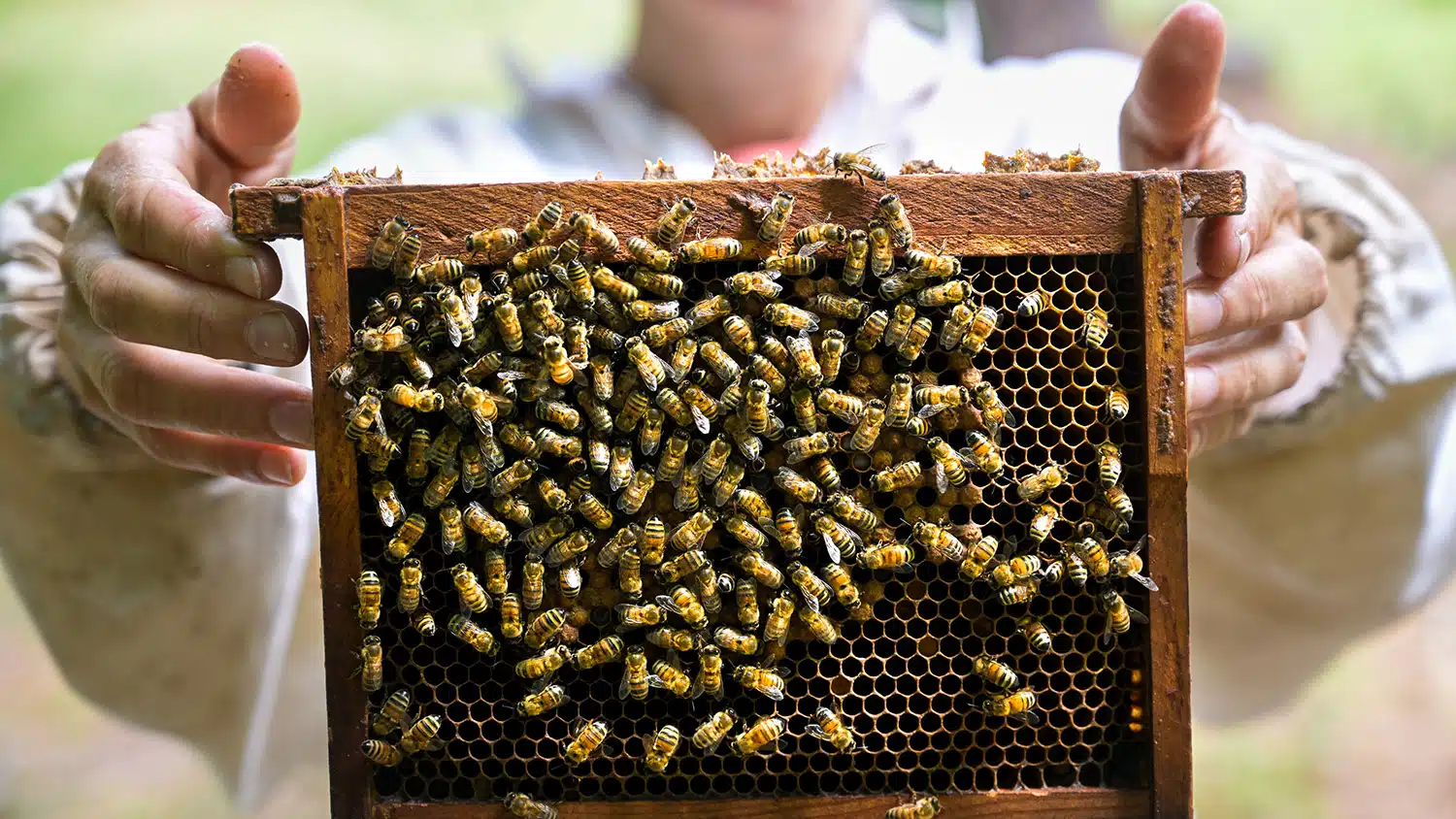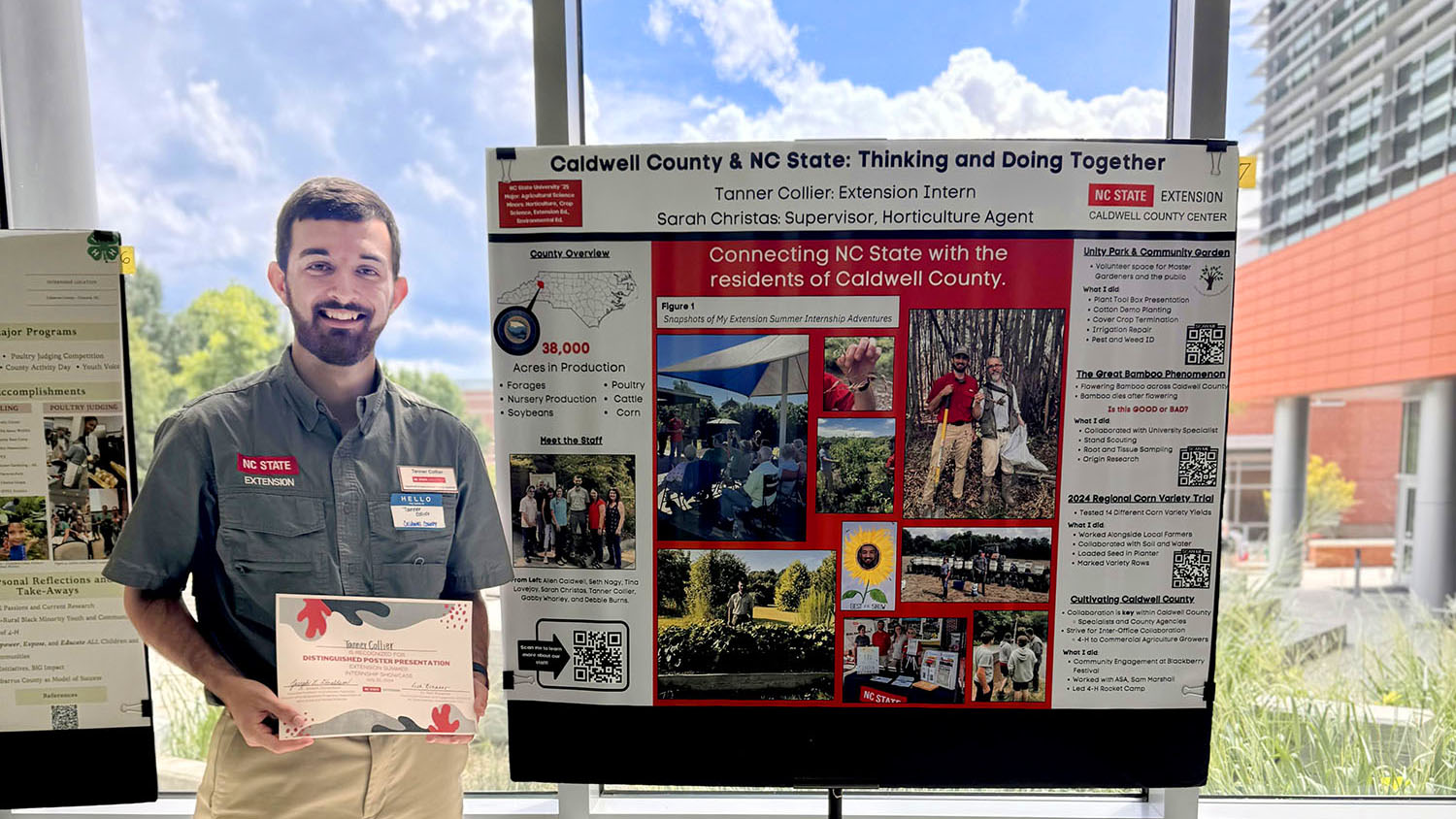5 Native Trees To Plant for Backyard Wildlife Habitat
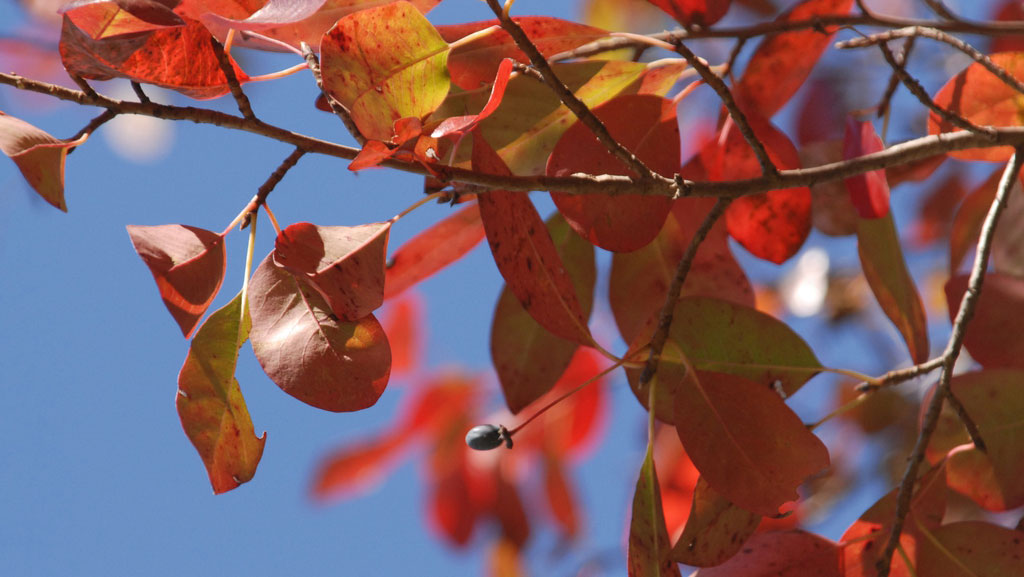
Jim Robbins, CC BY-NC-ND 4.0
Fall is the perfect time to add a new native tree to your yard. Your animal neighbors will thank you by visiting often.
Native plants provide essential food and habitat for wildlife in addition to enhancing your landscape’s visual appeal, says Charlotte Glen, native plants expert and program manager for the NC State Extension Master GardenerSM program.
“It’s not just huge national parks and wildlife preserves that provide habitat,” Glen says. “Our landscapes and yards collectively can play a huge role in providing food and habitat for wildlife.”
Trees function as “foraging hubs” because of their size, providing nectar for pollinators, caterpillars for birds, and fruits and seeds for foraging wildlife.
For humans, trees provide shade, raise property values, and absorb and store carbon from the atmosphere, Glen says. “Between their benefits to the environment as a whole and their benefits to wildlife and property, the presence of trees is a very important one.”
If you’re not sure where to start, Glen created a list of 5 wildlife-friendly native trees of different sizes for a range of landscape conditions.
She says October through December is an ideal tree planting window, but you can follow this Extension guide or watch this video series to plant trees anytime the ground isn’t frozen — which is most of the time in North Carolina, except at higher altitudes. Trees planted in spring and summer need extra care to ensure they get enough water during the growing season.
Browse the native tree list for ideas on what to plant.
Large tree: White oak

White oak (Quercus alba)
When it comes to trees that provide the most benefits to wildlife, oaks rise above the rest, Glen says. Many oak species are native to the Southeast, with 32 native oak species appearing on the North Carolina Extension Gardener Plant Toolbox. Though not all of them may be available at your local nursery, you’re likely to find an assortment.
What to know about oaks
- Grow throughout the Southeast
- Thrive in wetter or drier locations, depending on species
- Sustain a multitude of wildlife species
- Require a lot of space as large shade trees
“Every yard needs an oak tree. And there’s an oak tree for every yard because we have oak species adapted to every habitat. These include species such as live oak that grow at the coast that tolerate all kinds of wind and salt spray, and my personal favorite, the white oak, that grows throughout the state as a stately shade tree.” Charlotte Glen
Medium-sized tree: Red maple
Red maple (Acer rubrum)
The red maple thrives across North Carolina, especially in wetter forested areas. Glen says it’s also a great addition to home landscapes. “In an area with other trees or a lawn around it, a red maple can thrive, especially in a moist area,” she says.
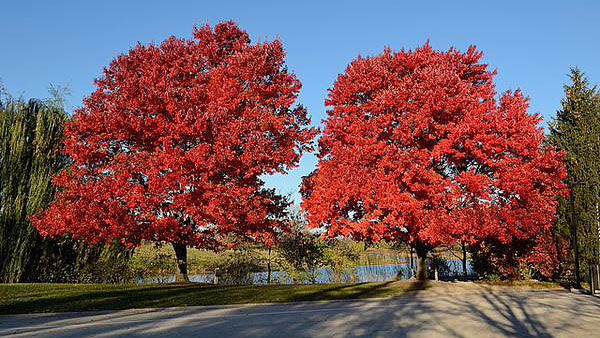
What to know about the red maple
- Produces fiery fall color
- Provides good shade
- Prefers wetter areas in the landscape
- Grows faster than an oak but not as tall
- Supports pollinators with early season blooms
“Red maples bloom really early in the spring, sometimes in late January or early February, so they’re one of the first nectar sources for pollinators. Native bees and pollinators buzz all around the tiny blooms.” Charlotte Glen
Medium-sized tree: Blackgum

Blackgum (Nyssa sylvatica)
Blackgum, another medium-sized tree prized for its fall foliage, produces fruits that attract wildlife. Like the maple, a blackgum tree can tolerate wetter areas in home landscapes but will also thrive in well drained sites. “It really is an adaptable tree that can grow in areas that are occasionally flooded as well as on hillsides where it’s always dry, though it will need extra water while getting established,” Glen explains.
What to know about the blackgum tree
- Provides bright fall color
- Produces fruits for wildlife
- Thrives in wet and dry areas
“Black gum fruits are a wonderful food source for our fall migrating birds, which often move through at night. It’s really important for them as they migrate to have nutritious high-quality food all along the way. Black gum is definitely one of their favorites.” Charlotte Glen
Small tree: Flowering dogwood
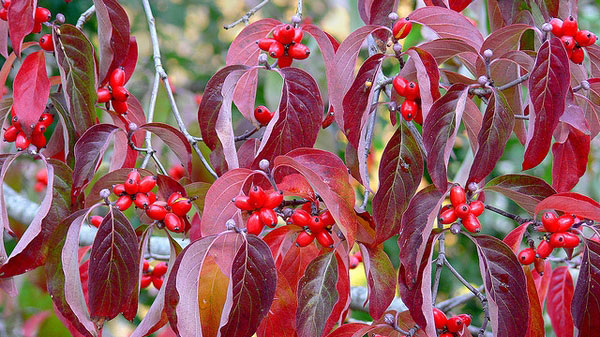
Flowering dogwood (Cornus florida)
The dogwood is a year-round wildlife magnet. In the spring, its flowers attract bees and butterflies. In the fall, its red fruits feed migrating birds and squirrels. Though North Carolina’s state tree grows well in the forest understory, Glen says the dogwood can also thrive in backyards, given the proper conditions.
What to know about flowering dogwood
- Prefers sheltered areas with light shade
- Needs acidic soil that contains organic matter
- Attracts pollinators when in bloom
- Produces red fruits for squirrels and migrating birds
- Provides fall color
- Tolerates heat well once established
“Dogwoods are one of our most beloved native trees. People may be concerned about losing trees to dogwood anthracnose disease, but for most of us throughout North Carolina, unless you’re in some cool mountain coves, you’re unlikely to encounter disease issues that could kill the trees.” Charlotte Glen
Small tree: Sweet bay magnolia
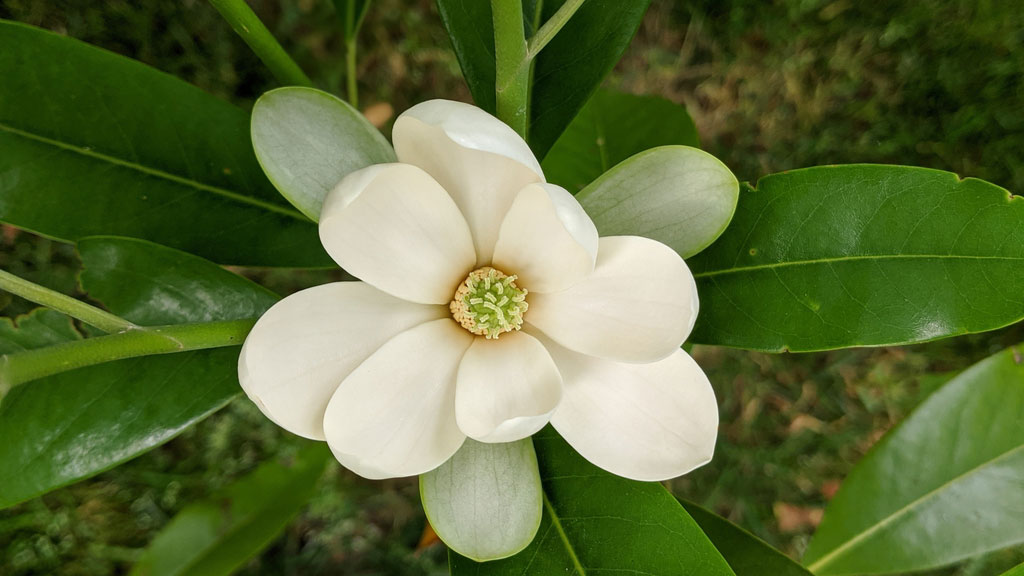
Sweet bay magnolia (Magnolia virgiana)
Towering southern magnolias can be messy and a chore to maintain. The sweet bay magnolia scales down the challenges while producing characteristic magnolia blooms, Glen says. “They’re three to four inches across, but the blooms do attract a lot of different pollinators. And in the fall you get a smaller version of the cone that bears those red seeds for wildlife.”
What to know about sweet bay magnolia
- Holds its leaves much of the year, except in colder climates
- Produces beautiful blooms
- Attracts pollinators
- Produces red seeds for wildlife
- Often grows as a multistem tree
“The sweet bay magnolia is a lesser-known cousin of the southern magnolia but daintier in all aspects. It’s a smaller tree and its foliage is not as dense. It has the beautiful white blooms like you think of on southern magnolias, but they’re just scaled down.” Charlotte Glen
- Categories:

